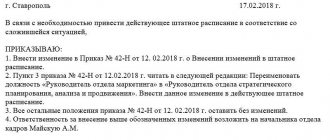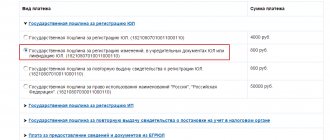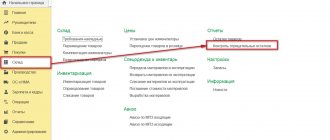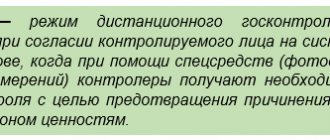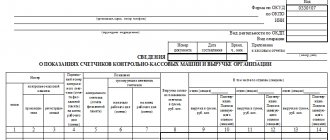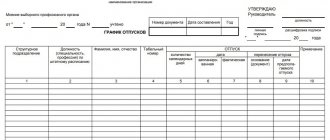For what reasons do job descriptions most often change?
This document is usually generated immediately after the registration of the enterprise for each position of the staffing table for an indefinite period. In the future, as practice shows, most often the job description undergoes changes for the following reasons: changes in the structure of the organization (reduction or increase in divisions and departments), reduction of personnel, redistribution of labor functions in order to optimize the work of employees. Also, adjustments to job descriptions may be required when amendments are made to legislation.
Design features if mandatory provisions are revised by agreement of the parties
As a rule, the DI does not contain a detailed description of working conditions - a reference is given to the LNA. The main changes are being made in connection with the adjustment of job functions. These conditions are changed only by mutual agreement of the parties (Article 72 of the Labor Code). The manager will do this unilaterally in one case: by proving that the changes are a consequence of changes in the organizational or technological conditions of employment (Article 74 of the Labor Code).
Here are instructions on how to change an employee’s job description by agreement of the parties.
Step 1. The changes made are discussed orally - this is not prohibited. In a large enterprise, it is more reasonable to prepare a project, clearly list all amendments to the LNA for the employee and obtain a signature on the agreement on the project.
Important. If the employee does not give his consent, he will continue to work according to the previous DI (or act in accordance with Article 74 of the Labor Code of the Russian Federation if there are grounds). If the changes are nevertheless approved, they will be distributed only to new employees hired after the new edition.
Step 2. The option agreed with the employee should be approved. Two methods are used:
- the stamp on the document “APPROVED” and the signature of the manager;
- by order.
Step 3. Amendments to the labor function reflected in the LNA should be recorded in the employment contract. For this purpose, two copies of the additional agreement are prepared. The text fully specifies the clauses of the TD that were agreed upon in the new edition. The TD is not completely reissued.
The additional agreement is signed by the manager and the employee. The employee confirms with his signature that work has begun according to the amended DI.
What is the order for?
You cannot simply change some lines in the job description of an employee of an enterprise. This is a rather serious procedure, which includes several stages, and the very first is the issuance of an order to make changes.
An order is an administrative act on the basis of which other company employees implement management instructions.
The absence of an order in the event of inspections of the organization’s activities by state supervisory authorities may lead to administrative punishment of the director and the legal entity itself.
Notification of changes to the terms of the employment contract determined by the parties
In accordance with Art. 56, 57 of the Labor Code of the Russian Federation, the subject of the employment contract includes:
- description of the employee’s job function;
- working conditions.
Since the content of the DI is not regulated, it may include information related to the employment contract in the above part. Changing its conditions is carried out in 2 ways:
- By agreement of the parties - as a general rule (Article 72 of the Labor Code of the Russian Federation). Therefore, it is advisable to formalize a change in the DI, which is part of the employment contract, in an additional agreement to it.
- At the initiative of the employer - in case of organizational and technological changes (Article 72 of the Labor Code of the Russian Federation) while maintaining the same labor function. In such a situation, you need to notify the employee 2 months in advance of the upcoming changes (a sample notification and some details of the changes can be found at the link: Notification of changes in the terms of the employment contract). If the terms of the employment contract do not change (for example, qualification requirements are adjusted), this requirement does not need to be observed.
Please note that the procedure for developing a new DI or its changes, agreeing and issuing an order to approve changes, the contents of this order do not have to be brought to the attention of the employee, since these procedures and documents do not affect his labor rights and do not relate to the information provided on the basis of clause 1 Art. 62 Labor Code of the Russian Federation.
The corresponding conclusion was made in the decision of the Zheleznogorsk City Court of the Krasnoyarsk Territory dated 02/01/2011 in case No. 2-215/2011. The subject of information and agreement, if necessary, is only the content of changes in the DI.
Whose autographs should appear on the document?
Since all orders are issued on behalf of the director, he must be the first to sign this order.
In addition to him, the form must indicate all the persons to whom he is related, as well as those employees of the enterprise who are responsible for the execution of the order. It should be said that in some cases, employees of an organization can leave their autographs about familiarization not directly in the order itself, but in a separate act or statement (this is especially true in large companies with a large number of personnel).
A stamp in a document is not a strictly mandatory condition for its authenticity, but if there is an indication of its use in the company’s regulations, then the order should still be endorsed using a stamp.
General provisions on job descriptions
A job description is a local act that defines a list of responsibilities of employees working in certain positions (loader, chief engineer, HR specialist, etc.).
All employees to whom the instructions apply are required to comply with them if this is stipulated in their employment contracts. When concluding an employment contract, the employer is obliged to familiarize the hired employee with the local regulations in force in the organization, including the relevant job description.
However, the employee’s responsibilities can also be specified in the employment contract - in this case, a separate job description is not required. If the rights and responsibilities of an employee are not reflected in detail in the employment contract, it contains a link to the job description in which they are spelled out.
In the absence of clearly regulated job responsibilities, work in an organization cannot be effective, since the worker will not know what exactly he must do. In addition, in this case the employer will not have the opportunity to impose a penalty on the negligent employee for unfulfilled work.
How to account and store
The order, as one of the main documents regulating the activities of the organization, is subject to certain accounting. To do this, information about it must be entered in a special accounting journal, where it is enough to make a note about the date of its issue and number. After this, the completed form and signed by all interested parties should be filed in the same place where other similar papers are already stored. Here it must be available for the period established by law or for the period prescribed in the accounting policy of the enterprise.
Is it permissible to change a job description without the employee’s consent?
Due to the requirements of Art. 74 of the Labor Code of the Russian Federation, management has the right to change the requirements of job descriptions without the consent of employees if the following have changed:
- working conditions (for example, reorganization took place, new work modes were introduced);
- production technologies (for example, new equipment has appeared).
In addition to the fact that the employer introduces new working conditions, he must justify their necessity, since if employees contact regulatory authorities, they will be able to challenge the change in job responsibilities.
At the same time, the employer, according to Part 2 of Art. 74 of the Labor Code of the Russian Federation, is obliged to notify employees of upcoming changes 2 months in advance.
After the employer initiates changes to the instructions, the situation may develop in one of the following ways:
- The employee agrees with the changes made and continues to work according to the new rules.
- The employee writes a refusal to continue working under the new conditions. In this case, the employer is obliged to offer an alternative vacancy (including a lower-ranking one). If the employee agrees, he continues to work in the new position; if he refuses, the contract is terminated on the basis of clause 7, part 1, art. 77 Labor Code of the Russian Federation.
Sample order to amend a job description
If you need to make an order to make changes to a job description that you have not encountered before, study its sample and detailed analysis - with its help you will create the correct order without any problems.
- To begin, enter the name of the company into the document, then assign a number to the order, indicate the place and date of its creation.
- Next, form the main part. Here it is necessary to indicate the basis for drawing up the order (i.e., provide a link to the law or internal act of the company that is directly related to the document being created), as well as the justification (i.e., the real reason).
- Then enter the name of the position for which the functions are changing, and in order, enter in the order an indication of those items of the job description that are subject to amendment.
- Include a new version of each item, then mark the employee who will be responsible for the execution of this order.
- At the end, do not forget to take care of collecting signatures for the document.
When do they change DI?
In modern market conditions, changes are always taking place at an enterprise, new technologies are appearing, business processes and the structure of the organization are being revised. If new tasks appear or the range of responsibilities has expanded, then the job description will also have to be corrected. Often you will need to take into account the opinions of employees who do not always agree with innovations.
Among the reasons for adjusting the job description:
- expansion or redistribution of responsibilities to optimize labor;
- updating the staffing table;
- renaming the enterprise;
- changing the structure of the enterprise;
- introduction of new production technologies;
- the emergence of new technical regulations;
- transfer of an employee to another position;
- change of surname by the employee (for personal DI);
- amendments to legislation.
There are no clear procedures for amending labor legislation. And the employer has the right to independently determine the procedure for action (letter of Rostrud No. 4412-6 dated October 31, 2007). Provided that everything is done within the framework of legal norms.
Before you start editing your job description, you need to answer the following questions:
- How is the job description drawn up - as an annex to the employment contract or as a separate regulatory act?
- Do adjustments affect the terms of the employment contract?
- What caused the changes - the urgent need for changes in technological and organizational working conditions or other reasons?
Depending on the answer, the procedure for making changes is different.
How to notify an employee of a change in job responsibilities
Before delving into why it is necessary to notify an employee about the introduction of additional duties, it is important to understand what job responsibilities are - this is a specific job that is prescribed in the job description and for which the employer plans to pay a salary. The document is not mandatory; it is not in the Labor Code. However, an experienced leader will never give it up:
- firstly, it is a tool of influence: you poke a careless employee’s nose into the instructions and - voila - the employee has nowhere to go, starts working - he himself signed when he was hired that he was familiar with his functionality, which he is obliged to perform;
- secondly, you will be punished both in case of inspection by inspecting organizations if you do not provide such a document. You will prove your case later in court, if you have the desire and time.
Therefore, the document is important in all respects. And it is an internal local act, with which we introduce the candidate when applying for a job before signing an employment contract (Article 68 of the Labor Code of the Russian Federation).
IMPORTANT!
The document itself does not seem to be mandatory, but making changes to it is a procedure regulated by law. This is the source of the need to write a letter about changing job responsibilities and obtaining the employee’s approval.
The letter of the Federal Service for Labor and Employment dated October 31, 2007 No. 4412-6, in paragraph 5, states that our sacred duty is to notify the employee in advance and in writing that the employer plans to change his job responsibilities, obtain his consent, and only then introduce something new.
Let us note that the Labor Code of the Russian Federation is silent on notification of a change of duties, but in Art. 72 indicates that any amendments and additions to the employment contract are only with the written consent of the employee. And in Art. 74 obliges the employer to warn the employee about such innovations two months in advance.
Consequently, whatever one may say, the notice of new job responsibilities will have to be printed in two copies, signed by the director and solemnly handed over to the person for signature two months before the changes take effect. Then have a conversation with him about the need for such amendments, admonish, exhort, persuade, beg, etc. - depending on your luck. And get the employee’s signature stating that, okay, he agrees. Only after this make changes to the document. Don't forget to keep one of the signed copies.
The employee is reluctant and flatly refuses to agree to the new conditions, so we take extreme measures and look for a replacement. This is undesirable, this is bad, this is not human, but we have no other option to introduce new conditions into labor duties.
ConsultantPlus experts discussed how to change the essential terms of an employment contract. Use these instructions for free.
